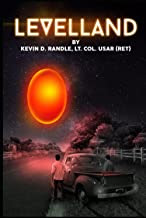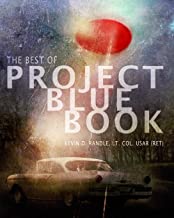When Ray Santilli admitted recently that he had faked the footage of the alien autopsy film there were those who were didn’t believe this new revelation. They began to suggest reasons why they didn’t believe Santilli was telling the truth. And they asked a very interesting question of the rest of us. If we didn’t believe Santilli in the beginning, when he first released the film, why did we believe him now?
The answer is simple. Evidence.
When Santilli appeared on the scene in the mid-1990s, he came with what seemed to be hard evidence. He had the statement from the cameraman who took the film and he had the film itself. At the time he first appeared he made a number of statements such as claiming that President Truman could be seen on the debris field and that trucks and cranes were there, all things hard if not impossible to fake. There were supposed to be nearly two hours of film including the in the field, preliminary autopsy and then another conducted in a morgue. At one point Santilli produced some classification sheets that he said were on the film canisters but which were more consistent with something from Hollywood than they were with military orders. After they were criticized, he quickly withdrew them.
Here are a few of the original problems. Take the film. This is a piece of physical evidence. We can examine what is on the film and see if it conforms to the standards of other such films shot at the time. First, it didn’t conform. Autopsy footage, according to former military cameramen, was always shot in color. There were normally three cameras, one fixed motion picture, one motion picture camera operated by a human operator, and one still camera operator. Santilli’s footage was in black and white with a single movie camera. Although the alien autopsy would have been a unique event, there was no reason to violate the norms of the time.
The film could be tested for age. Kodak said they would do it, but they wanted a frame of the film with the alien on it. Santilli never would allow that to happen providing a variety of excuses. If the film was dated to the proper time, 1947, while not proving the footage real, it certainly would go a long way in that direction. Refusal, however, suggested that there was either no film at all (meaning the thing was only on videotape) or that Santilli knew that Kodak would learn the truth about the age and that would uncut its value.
Kodak did say that all its film stock was marked with a code so that the year of manufacture could be determined. The problem was that they recycled the codes. So, while Santilli’s film had the code for 1947, the proper year, it could also have been 1967 or 1987. This proved nothing.
The real trouble was the lack of provenance for the film. Santilli said that it came from an U.S. Army cameraman who had inadvertently ended up with some canisters of classified film. He hadn’t known what to do with it or how to return it to the Army. But, Santilli would never identify the cameraman. Instead, he produced a transcript of an interview with the cameraman. It was filled with British colloquialisms. When challenged, Santilli said his British secretary had typed it, though that didn’t explain why an American was using British terminology. A new version was released without the British accent.
Then, while viewing footage of the wreckage on display in a tent, there was a metallic I-beam with some kind of strange symbols on it. Well, not so strange. The symbols spelled out video. What were the odds that alien symbols would spell out an English word when we had so few samples of the alien writing? That seemed to tell many of us that this was a video joke.
These, among other things, raised red flags for many of us. These were questions that were asked but were never satisfactorily answered. Instead, we were told that no one had come forward admitting this film was a hoax. It couldn’t have been carried out by one man, so where were all the others claiming they had participated in its creation?
Then, several years ago Phillip Mantle released a statement that the tent footage had been faked. This was of the first, preliminary autopsy, allegedly conducted in a tent on the crash site. Santilli, the story went, was disappointed by the quality of the tent footage, so he had recreated it in hopes of having something a little better to show and to make a little more money. Santilli was admitting that the tent footage was a hoax. He and friends had created it. The reason for it was irrelevant. The point was that it had been faked.
Now, several years later, Santilli was telling us all the footage was a recreation. He even identified the man who made the alien body and that man had expertise that allowed him to create it. Not only that, the man was proud of his work and confirmed that he had made the alien creature.
So, why do we believe Santilli now when we didn’t so long ago? Because all the evidence supports the admission and there is corroborating testimony from a man who has been identified as one of the participants in the hoax. There is no cameraman, and if there is film (as opposed to only videotape) of the autopsy, it was film Santilli and his friends created. There is no evidence to suggest that the alien autopsy is real and there never was.
But what astonishes me, as it has in the past, is that the man responsible has admitted the hoax and there are people who refuse to believe him. He told us how it was done, identified the other participants, and gave us a good reason for why it was done. And still people want to believe that the footage is real.
Well, it’s not. It’s a fake and I would hope that we never have to deal with it again. This is, however, UFO research and no matter what the outcome of a case, no matter how thoroughly it has been researched and then explained, it will resurface as people with little critical thinking skills tell us why it was real.




















